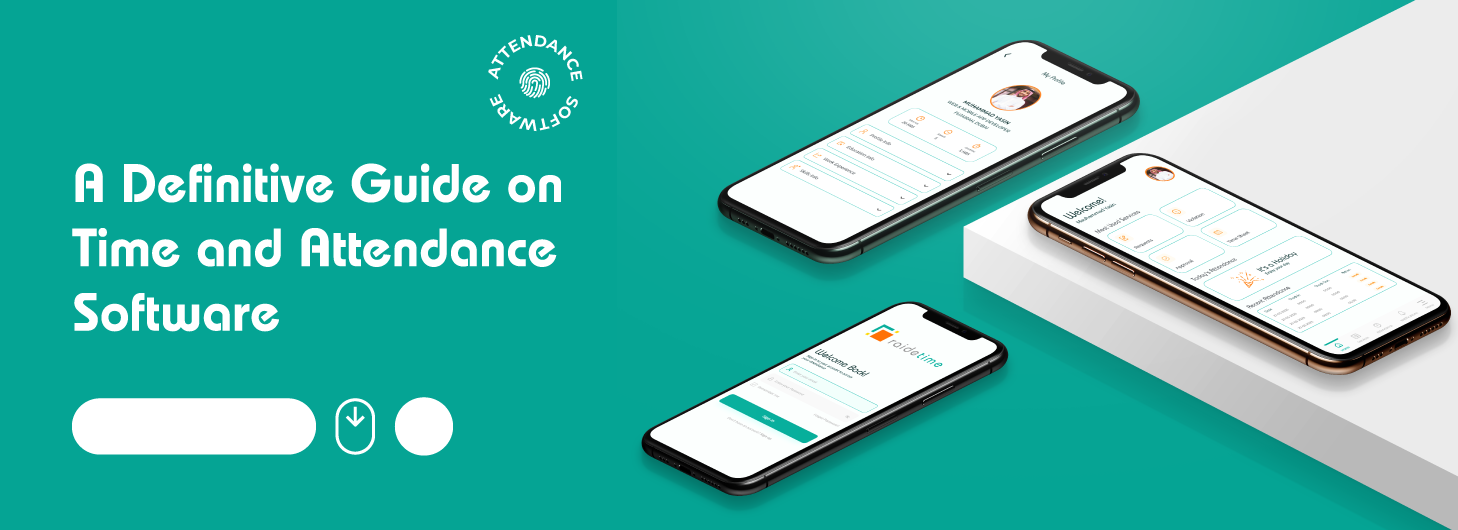Written By
Kalim Ullah
2025-Jan-10
How Can Geo-Fence Attendance Transform Workforce Efficiency for a Smarter Future?
The present-day corporate world is fast-moving with remote work, hybrid models, and tasks on the go, challenging most employees. It makes it difficult to hold them accountable without overburdening them with administrative tasks.
HR
managers and operations leaders often struggle to track employee attendance.
They want to do so without causing inconvenience or decreasing
productivity.
This is
where geo-fence attendance provides a location-based solution. Not only does it
simplify processes, but it also addresses the unique challenges faced by employees.
Consider
an employee stuck in traffic, stressed about making it to the office on time.
Or field workers juggling multiple locations, finding it tedious to report
their presence. Geo-fence attendance provides an easy solution to these
problems.
It
offers an effortless system for employees. At the same time, it gives managers
the most accurate and up-to-date information.
In this guide, we’ll explore:
- What geo-fence attendance is?
- How does it
benefit both employees and managers?
- Its role in shaping workforce
efficiency for a smarter future.
What is Geo-Fence Attendance?
Geo-fence
attendance is a digital system with geolocation technology. It
simplifies and automates the tracking of employee attendance. It creates
predefined virtual boundaries, known as geo-fences, around locations
such as an office building or worksite to any area in which an employee is
responsible.

How Does Geo-Fence Attendance Work?
1.
Virtual Boundaries Setup:
Businesses
use GPS technology to define a geo-fence-which essentially forms a virtual
perimeter around an office, warehouse, or job site.
2.
Automatic Attendance Logging:
Once
the system detects that an employee's smartphone or device has entered or
exited the geo-fenced area, it automatically records their clock-in or
clock-out.
- No manual effort is required. Forget swiping
cards, signing registers, or biometric scanning.
- Real-Time Accuracy. The system ensures that only
those physically present within the designated area are marked as
"present."
3.
Seamless Notifications
The
system can automatically send reminders to employees if they forget to clock in
or alert managers about unusual attendance patterns to ensure smooth
operations.
Why
Geo-Fence Attendance is a Groundbreaking
Traditional
attendance methods often have errors and inefficiencies such as "buddy
punching" or disputes over manual entries.
Geo-fence
attendance eliminates these issues by offering:
- Automation
simplifies the entire process, saving time for HR teams and employees
alike.
- Transparency
builds trust by providing precise, indisputable records of attendance.
- Flexibility
for remote teams, field workers, and on-site employees.
Key
Features That Make Geo-Fence Attendance Unique
1.
Customizable Boundaries:
Whether
it’s a single office floor, a nationwide chain, or fieldwork locations, the
system can adapt to diverse needs.
2.
Integration with Existing Systems:
Geo-fencing
can easily sync with payroll, HR, and task management tools, creating a
centralized hub for employee data.
3.
Device Agnostic:
Works
on smartphones, tablets, and even wearable devices, ensuring accessibility for
all employees.
4.
Scalability for Growth:
This
system grows with your business, adds new locations, updates geo-fences, or
implements advanced features as needed.
How It
Works in Practice
Hold
for a second, an employee walks into a workplace and gets marked present on
their attendance report as soon as their smartphone picks up that he has
entered the geo-fenced zone.
No
manual inputs, no swiping cards, no biometric scans.
For
remote teams or field workers, geo-fencing ensures attendance is recorded at
specific client sites or delivery locations.
This
technology helps HR managers reduce paperwork, avoid discrepancies, and gain
clear insight into workforce movements.
Advantages
of Geolocation-Based Attendance
1.
Increased accuracy and accountability
- Traditional
methods (manual timesheets, badge swipes) can have errors, including buddy
punching (when one employee punches in for another).
- Geo-fence
ensures accurate attendance. It confirms that an employee is in the
designated area before marking attendance, holding people accountable.
- For employees,
this builds trust. No more disputes over incorrect logs, as the system’s
precision leaves no room for doubt.
2.
Reduction in Manual Error and Time of Administration
- HR
professionals waste hours crosschecking attendance data and resolving
discrepancies. Geo-fencing reduces this effort to the minimum.
- The system
will automatically track attendance with minimal chances of human error,
thereby giving the HR teams time to focus on strategic activities.
- This way, employees
may concentrate on their tasks without the hassle of manually punching
the punch clock since their shift is automatically marked and notified.
How
Geo-Fence Attendance Meets Operations Needs
1.
Real-time tracking and monitoring
Geo-fence
attendance offers managers real-time visibility on who is where and when. It is
particularly important for industries that have mobile workforces, like
logistics or construction.
Managers
can track attendance without the need to micromanage, this helps to build trust
among employees.
2.
Integration with Payroll and HR Systems
Integration
of geo-fence attendance with payroll software will ensure accurate salary
calculations from the logged hours.
Over
time, leave and absenteeism for the employees will also be automatically
updated, decreasing the errors in payroll and ensuring equitable remuneration.
The employees have peace of mind knowing that their efforts have been reflected
accurately.
3. Automated
Notifications and Alerts for Managers
Geo-fence
systems automatically send notifications when an employee crosses the boundary.
For example, a manager will receive a notification if a field worker fails to
check into the site at a certain time.
Employees
are reminded to clock in if they forget, ensuring smooth operations without the
need for micromanagement.
Geo-fencing
in various industries (The way it resolves unique challenges)
1.
Retail Chains
- Managing
attendance across multiple outlets.
- Geo-fencing
automates attendance logging, saving store managers time and reducing
manual errors.
- Employees can
focus on customer service while managers gain real-time insights into
workforce attendance.
2.
Healthcare
- Round-the-clock
shift-based attendance tracking.
- Geo-fencing
ensures healthcare workers clock in and out at the correct location
automatically.
- Reduced
payroll discrepancies and improved efficiency in managing staff schedules.
3.
Construction
- Tracking
attendance at multiple project sites.
- Geo-fencing
records field workers’ check-ins as they enter designated zones.
- Real-time
updates for managers and hassle-free reporting for employees.
4.
Banking
- Ensuring
accountability for staff across branches, ATMs, and mobile operations.
- Geo-fencing
tracks attendance as employees enter assigned work locations, from branch
offices to cash pickup zones.
- Accurate
payroll calculations and improved operational transparency build trust
among employees.
5.
Education
- Monitoring
attendance for teaching and administrative staff across campuses.
- Geo-fencing
automates clock-ins when staff arrive at the campus or off-site locations
for fieldwork.
- It simplify
the processes like reduce administrative overhead, enabling staff to focus
on delivering quality education.
6.
Hospitality
- Managing a
dispersed workforce in hotels, kitchens, and event setups.
- Geo-fencing
enables automatic attendance recording at specific work areas or venues.
- Increased
accountability, reduced disputes, and efficient resource allocation for
exceptional guest experiences.
Each
industry benefits uniquely from geo-fencing, with solutions customized
to overcome specific workforce challenges, ultimately boosting efficiency and
streamlining operations.
Challenges
and Solutions
While
geo-fencing attendance offers numerous benefits, its implementation is not
without challenges.
Potential
Challenges
1.
Privacy Concerns:
Employees
may worry about constant tracking and misuse of location data.
2.
Technical Problems:
Sometimes,
poor GPS signals or software bugs may hamper the system.
3.
Resistance to Change:
Employees
used to traditional ways may not easily accept new technology.
Solutions
and Best Practices
1.
Transparency:
Explain
to the employees how the system works and ensure them that their data is safe
and is only used for attendance purposes.
2.
Training Programs:
Train
employees and managers to understand and use the system.
3.
Reliable Technology:
Invest
in robust software that minimizes technical issues and ensures a smooth
experience for users.
With
these challenges in mind, business houses can be assured of a smoother
transition into geo-fence attendance systems.
Future
of Location-Based Attendance
1.
Trends and Innovations in Geo-Fence Attendance
Geo-fencing
attendance systems will change with advancements in technology. As technology
becomes smarter and more efficient, AI and machine learning will be used to
analyze attendance patterns.
This
will help project future workforce needs. AI will also identify potential
workforce shortages based on historical data.
2.
Integration with Wearables
Future
systems may include wearable devices, such as smartwatches, to enhance
location-based attendance tracking. These devices can provide additional insights
into employee activity, such as productivity levels and health metrics.
3. The
Role of IoT
Geo-fencing
would play a large role in IoT. Connected devices at the workplace could
interact with the attendance system to provide much more granular data.
An
office enabled with IoT, for example, could adjust the lighting and temperature
settings depending on the number of employees who have been marked present.
In a nutshell, Geo-fence attendance is
more than just technology. It solves challenges faced by HR managers,
operations leaders, and employees.
For HR managers, it automates tracking,
improves accuracy, and reduces administrative work. For employees, it
removes the hassle of manual logging, creating a more focused and productive
work environment.
As technology advances, geo-fencing isn’t just
about keeping up, it’s about leading smarter, more efficient workforce
management.



